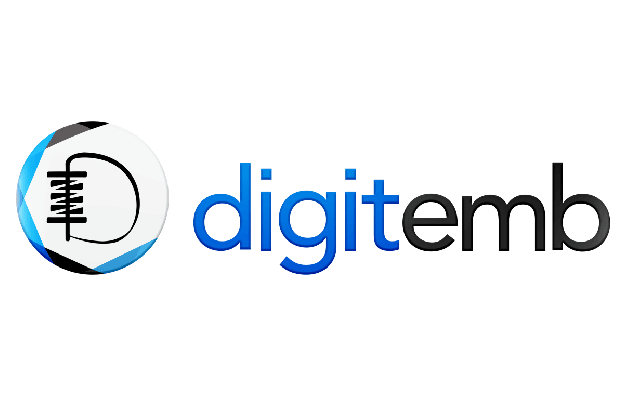Embroidery digitizing is the essential process that transforms ordinary artwork into stitch-ready embroidery files for machines to follow. It’s the bridge between digital design and physical craftsmanship — turning logos, patterns, or illustrations into beautifully stitched embroidery on garments, hats, and custom patches.
What Is Embroidery Digitizing?
Embroidery digitizing is the process of converting a design into a digital embroidery file using specialized software. This file instructs the machine on how to recreate the image with thread — determining stitch type, direction, length, and density. Each stitch is placed with precision, ensuring the design looks as sharp and vibrant in thread as it does on screen.
It’s not simply tracing an image; it’s a technical art form. Digitizers analyze every detail, from small letters to large fills, ensuring the final output remains balanced, readable, and visually appealing.
Why Embroidery Digitizing Is Important
Without quality digitizing, even high-end embroidery machines can’t produce perfect results. Proper digitizing ensures smooth stitching, clean outlines, and consistent details. It determines the quality, durability, and overall look of the finished embroidery.
Advantages of Professional Digitizing
-
Delivers cleaner, sharper results
-
Ensures consistent output for large production runs
-
Prevents thread breaks and design distortions
-
Allows resizing while maintaining proportions
-
Produces long-lasting, machine-ready files for any fabric
The Step-by-Step Digitizing Process
1. Design Preparation
The process begins by preparing the artwork. The digitizer simplifies complex elements, ensuring they can be effectively embroidered while maintaining the design’s original character.
2. Stitch Mapping
Next, the digitizer plans the stitch order — defining the path the needle will follow to achieve the best look and efficiency. This stage determines the structure of the design.
3. Stitch Type and Density
Different design areas require different stitch types:
-
Satin Stitches: For borders, text, and curved shapes.
-
Fill Stitches: For large, filled areas.
-
Running Stitches: For fine outlines or small details.
Proper density and tension adjustments are made to prevent puckering or uneven stitching.
4. Machine Testing
Once the design is digitized, it’s tested on the embroidery machine. Minor adjustments are made for fabric type, size, or color to ensure the design runs smoothly during production.
Applications of Embroidery Digitizing
Custom Embroidered Patches
Embroidery digitizing plays a vital role in creating patches for uniforms, sports teams, and brands. Each stitch must align perfectly to ensure sharp text and defined edges.
Apparel Branding
Digitizing allows businesses to display their logos on uniforms, jackets, and hats with precision and professionalism. It’s a cost-effective and durable branding method.
Fashion and Streetwear
In the fashion industry, digitized embroidery adds texture and luxury to garments. Designers rely on professional digitizing to maintain their artistic vision on fabric.
Personalized Gifts
From monogrammed towels to custom bags, digitizing brings a personal touch to gifts by ensuring clean and elegant embroidery every time.
Importance of Fabric Consideration
Different fabrics behave differently during embroidery. A skilled digitizer understands these variations and adjusts stitch types, densities, and underlay settings accordingly. For example, leather needs lighter density than cotton, and stretchy fabrics require stabilizers to prevent distortion.
The Role of Technology in Embroidery Digitizing
Modern embroidery digitizing uses advanced software to simulate real-world stitching before production begins. This helps predict how the design will look and move on fabric, reducing errors and saving time. Despite automation, human expertise remains essential to fine-tune every stitch for artistic and technical perfection.
Key Features of a Good Digitizing Service
-
Skilled digitizers with artistic and technical expertise
-
Compatibility with multiple file formats (DST, PES, EMB, etc.)
-
Fast turnaround with quality assurance
-
Precision for small text, gradients, and 3D puff effects
-
Support for multiple materials and embroidery types
Why Businesses Choose Professional Digitizing
Professional digitizing services ensure every embroidered piece — whether a company logo or fashion patch — represents quality and consistency. They help maintain brand standards, reduce production delays, and guarantee that each product meets industry-grade embroidery standards.
Benefits of Quality Digitizing
Consistency
Accurate stitch mapping ensures the same results across different machines and production batches.
Durability
High-quality digitizing ensures stitches remain intact, colors stay vibrant, and designs retain their shape over time.
Versatility
Digitized files can be scaled or modified for use on different surfaces like denim, cotton, polyester, or even PVC patches.
Conclusion
Embroidery digitizing is where technology meets craftsmanship. It transforms creative ideas into beautifully stitched realities that enhance garments, uniforms, and accessories. Whether for fashion, branding, or custom patch production, quality digitizing guarantees precision, consistency, and durability.
By investing in expert embroidery digitizing, every stitch becomes a statement of excellence — reflecting attention to detail, professionalism, and creativity in every design.


